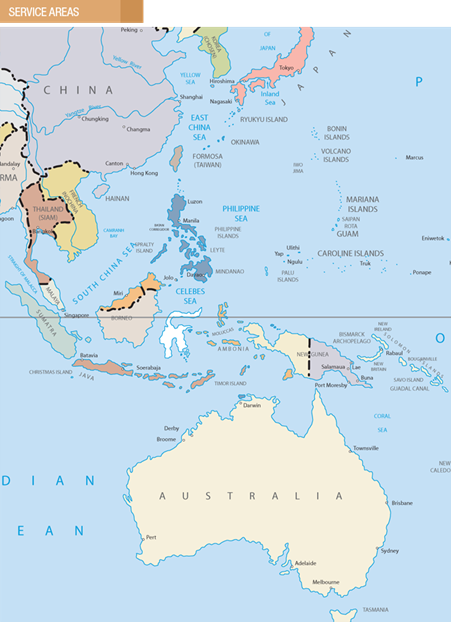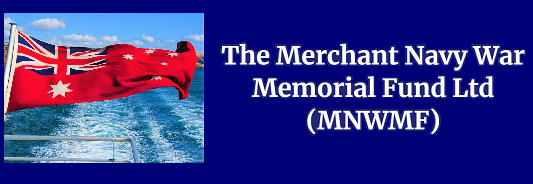Australian Merchant Navy
WWI & WWII
At the end of WWII, the Late Sir Winston Churchill, KG, OM, CH, TD, DL, FRS, RA,
declared, referring to those wearing the Merchant Navy (MN) lapel badge,
“if you ever meet one of those men, take your hat off to him because we would have lost the war if it was not for them”.
(Born 30/11/1874-Died 24/1/65) (Prime Minister of United Kingdom, 1940-45 & 1951-1955)
Introduction
The Australian Merchant Navy refers to the Australia’s commercial and shipping crews who during World War 1 and World War 11 carried valuable cargos were at much risk as Royal Australian Naval vessels. During WW1, 182 merchant seaman and in WW11, 386 merchant seaman lost their lives.
The Australian Merchant Navy like other allied countries at the time United Kingdom, New Zealand, Netherlands, Norway, and USA consisted of privately owned commercial shipping companies who along with there mariners participated in transporting valuable supplies.
During WW11 Australia had twenty two shipping companies were in operation. The ships owners along with their employees were not members of Australian Armed Forces, as often as not they sailed dangerous waters without naval escort, they were engaged ‘signed-on’, usually on a voyage-by-voyage basis.
They were not put into uniform, their pay stopped (at least in the early part of the war) if their ship was sunk, and they risked imprisonment if they refused to sail when a ship’s job was available. While in certain operational areas they were paid a War Risk Bonus which marginally supplemented their modest rates of pay.
But they served and sacrificed, and sharing their service, often their hardships and their watery risks and losses in their defensively equipped merchant ships were the Royal Australian Navy’s ‘Defensively equipped merchant ship gunners (D.E.M.S.), tasked to serve the small-calibre guns usually mounted at bow and stern.
The Red Ensign was used as the proper colours of the company registered ships. The ensign captured the spirit of the people who sailed under this flag in war and peace.

Australian military units first deployed in 1885, to the Sudan and then in 1899 to 1902 to the Boer War. The Great War 1914-1919 and the Second World War 1939-1945 followed, both with, for the first time, selective then heavy demands on merchant shipping fleets. They came at times when Australia’s emergent maturity was apparent. Increasingly its commercial interests and their merchant fleets rose with traditional determination, perseverance and quiet bravery in striving for the objectives, on both the fighting and the home fronts, of the nation’s victory in war and a return to their peacetime pursuits, ‘occupying their business in great waters’.
In decades since, the advances in technology, particularly in aviation, and the reduced size of wars have lessened the present and perhaps potential call for merchant shipping in emergencies. But nothing should dim the contributions of seafarers in the dark days of the 20th Century’s world wars.
Australia, the nation continent, should remember its history. This site tells of the nation’s conversion of its shipping resources, some two hundred vessels including major fishing vessels, from peacetime pursuits to what should be a much-valued element of the nation’s Second World War participation, more particularly in the Battle for Australia period 1942-1943.
The sacrifices of its Merchant Navy personnel and their part in ensuring the freedoms Australians enjoy today are great and must not be forgotten.
Most of 1939’s Australian merchant fleets and their management had lived through the Great War of 1914-1919. So when the prime ministers of the times – Robert Menzies in 1939 and John Curtin in 1941 – announced that Australia was at war, respectively with Germany and then Japan, it would have been no surprise that the country’s Merchant Navy stood ready to contribute to the Allied cause as well as its own safeguarding.
Indeed those building new tonnage in the United Kingdom shipyards in the late 1930s and early 1940s were not insensitive to looming world events.
So the twenty ship-owning companies ‘stepped-up’ and so did their mariners. But these were not easy times for seafarers; they were not ‘sworn’ members of Australia’s armed forces, as often as not they sailed dangerous waters without naval escort, they were engaged, ‘signed-on’, usually on a voyage-by-voyage basis, they were not put into uniform, their pay stopped (at least in the early part of the war) if and when their ship was sunk, and they risked imprisonment if they refused to sail when a ship’s job was available. While in certain operational areas they were paid a War Risk Bonus which marginally supplemented their modest rates of pay.
But they served and sacrificed, and sharing their service, often their hardships and their watery risks and losses in their defensively-equipped merchant ships were the Royal Australian Navy’s ‘D.E.M.S.gunners’, tasked to serve the small-calibre guns usually mounted at bow and stern.
They were part of how the Allied cause won the Second World War.

Merchant Ships of Australia in World War II
In Remembrance
Australian-owned ships and their crews – deck, engine-room, catering and pursuing departments – helped win the Second World War, particularly, but not only or exclusively, in the Asia-Pacific theatre of operations.
The following details the ships involved
and
the corporations that owned them..
It is dedicated to mercantile mariners who, across the ages, have carried the world’s goods from producer to user, but in particular it is intended as a tribute to all the Merchant Seamen who served in the 1939-1945 conflict, and indeed universally and especially to those who did not return, those who have no known grave but the depths of the oceans.
“They that go down to the sea in ships, and occupy their business in great waters”
- Adelaide Steamship Company
- Australasian United Steam Navigation Company
- Australian Shipping Board
- Broken Hill Proprietary Company Limited
- Burns, Philp & Company Limited
- Colonial Sugar Refining Company Limited
- HC Sleigh Company Limited
- Howard Smith Limited
- Huddart Parker Limited
- Illawarra & South Coast Steam Navigation Company
- James Paterson & Company
- James Patrick & Company Limited
- John Burke Queensland Proprietary Limited
- McIlwraith McEacharn Limited
- Melbourne Steamship Limited
- Newcastle & Hunter River Steamship Company Limited
- North Coast Steam Navigation Company Limited
- RW Miller & Company Limited
- State Shipping Service Of WA
- Tasmanian Steamers
- Holyman & Sons Pty Limited
- WR Carpenter & Company Limited
